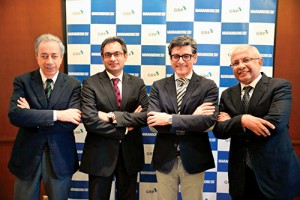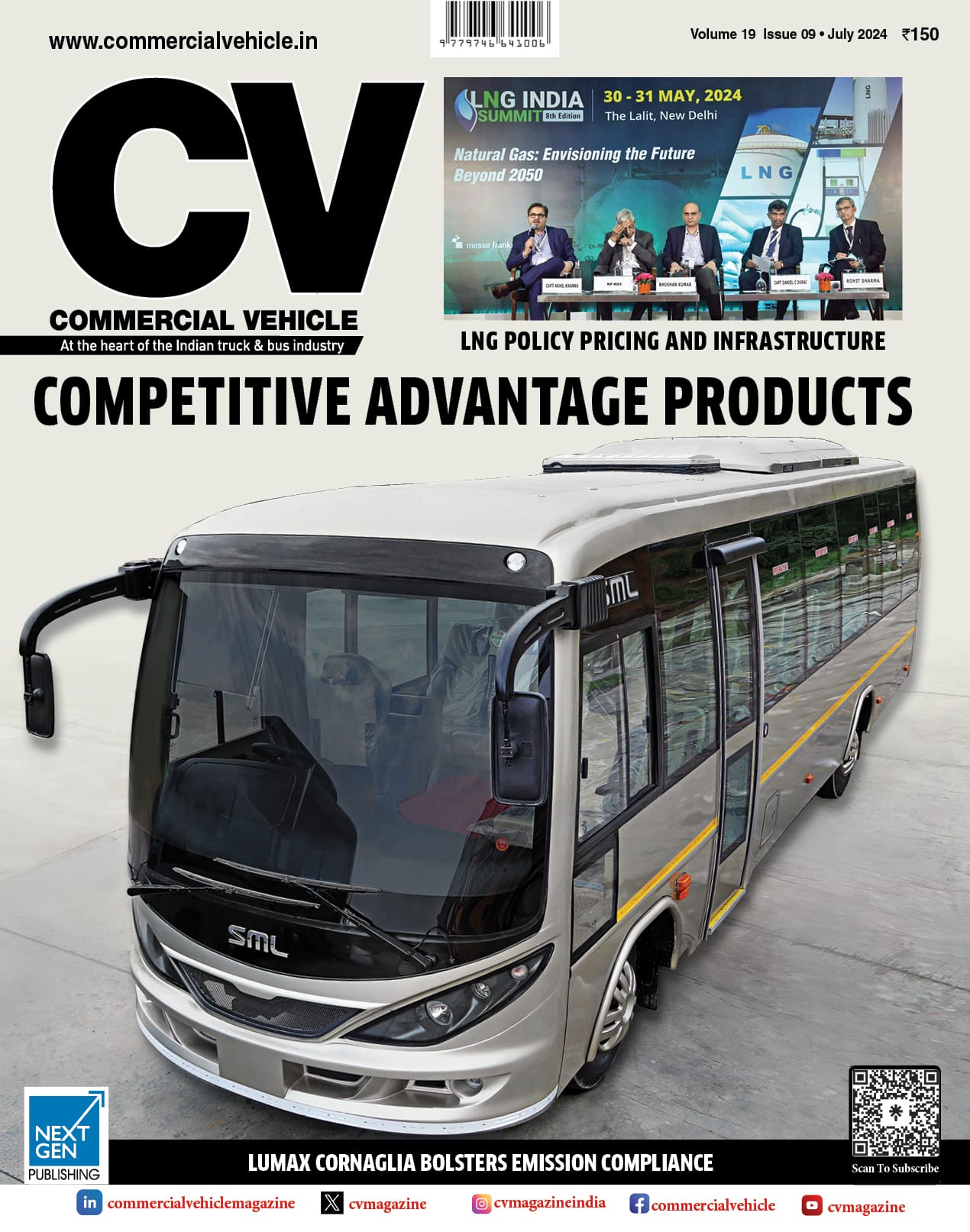Mumbai-based GRP has inked a Joint Venture (JV) with Marangoni of Italy to foray into the burgeoning tyre retreading market in India.
Story by:
Ashish Bhatia
Mumbai-based GRP is a 40 year old company that specialises in tyre recycling. It has five facilities across India with an installed capacity to recycle 79,000 metric-tonne per annum. A listed company with a CAGR of 27 per cent over the last decade, GRP sources tyres that are at the end of their life and cannot be retreaded. They are de-vulcanised and the resulting rubber is made re-usable again as raw material. The raw material finds its way to the tyre industry in the form of reclaimed rubber, and is used to manufacture tyres.
To foray into the burgeoning tyre retreading market by offering retreading solutions suited to markets where radialisation is a more recent phenomenon, GRP has inked a joint venture with Marangoni of Italy. Marangoni is GRP’s customer for 15 years, and specialises in precured retread solutions. In a bid to leverage the demand and supply void of quality tyre retreading solutions in the Indian market, the JV will be built with an investment of Rs. 2 crore. Both the partners will hold an equal share. Expressed Harsh Gandhi, Executive Director, GRP, that the JV is going to initially focus on developing a franchise model. It will focus on branding and promotion of Marangoni systems. Manufacturing will take a back-seat. “The pace of (company’s) growth would decide the extent to which the investment will be hiked,” he added. Mentioned Giuseppe Ferrari, MD, Marangoni Retreading Systems Business Unit, “Retread is made of two things, the material and its know-how, and the casing. We know about technology and they (GRP) know where the good and bad casings are. With this JV, we intend to promote modern retreading to independent retreaders.”
Indore has been chosen as the location of the JV. According to Ferrari, Indore was chosen because it is at the centre of the north, south, east and west corridor. “Indore also has a higher extent of radialisation than the national average,” Ferrari said further. An asset light model, the JV will import the treads from Marangoni and supply them to the channel partners. This, expressed Gandhi, would present both the partners a hope that their business model in the form of the JV will help them to break even earlier than expected. “The tyre retreading market is expected to mature in the next eight to 10 years,” he added.
Tyres take precedence after fuel efficiency
With the arrival of modern commercial vehicles and a move to higher tonnage, tyres are turning out to be the most important cost factor after fuel efficiency. Especially with the number of axles on a commercial vehicle rising. Radialisation of tyres in India is growing. Fleet operators are taking to radial tyres in a hope that they enhance productivity and make a fit case for retreading. India is expected to double its extent of radialisation in the next eight to 10 years. Retreading in-turn is set to gain momentum. Apart from specialising in precured retread solutions, Marangoni also builds radial tyres in Europe. With the know-how to manufacture radial tyres, Marangoni is expected to bring to the table an understanding of how costs play a role in the life-cycle of a radial tyre. Radial ply tyres are costlier than bias ply (diagonol) tyres. They hold a better chance to retread over a bias ply tyre. Given these factors, the JV, according to Ferrari, presents them an opportunity to fill up the void that exists between demand and supply of quality retreads.
In Italy, Marangoni supports independent retreaders through an in-house retreading system. It claims to have perfected it over the last 40 years. The company, according to Ferrari, enjoys a 25 per cent market share. Marangoni is also present in the North American, South American and South African markets. In India, the JV has roped in a local investor at Indore. He will mark the first franchise. More such independent retreaders are expected to come on board according to Gandhi. GRP’s existing set-up will provide relevant support to the franchise network. It would be in the form of the provision of equipment or auditing as per the requirement. The process would begin with an initial audit of the retreader’s facility. A call on up-gradation will be taken if necessary. The most appropriate equipment, training and support will be ensured for success by GRP as part of the JV. A case-to-case approach according to Gandhi will make for a people-centric business model. One that can give the modern retreading concept the right amount of push. And, in the right direction. Looking to capture a 10 per cent market share of the Indian retreading market initially, the JV will source materials from six of Marangoni’s factories.
Strong replacement market may pose a challenge
With demand for replacement market expected to get stronger, the growth plans of the JV may face some unexpected challenges. Especially in the wake of the tightening regulatory pressures. Replacement demand, said Gandhi, will affect in the short term. “A good number of Original Equipment (OE) sales are expected. However, the need for tyre retreading will be felt eventually. The life of a radial tyre is estimated to be in the region of 100,000 to 120,000 kms,” he added. Ferrari averred, “The time when the fleet owner is contemplating a replacement or retread would be the best time for us to make an offer. Replacing all the tyres on a truck could set the owner back by USD 3,000 or Rs. 2 lakh roughly.”
The JV is targeting those who buy quality new tyres. Those who are willing to spend a little more for tyres that are reliable and give good mileage. Such buyers, expressed Ferrari, would look for a superior retreading option in their pursuit for reliability and mileage. Fleet owners rank at the top of the list of clients the JV is targeting. It is focussed on specific tyre sizes – those that find use in Medium and Heavy Commercial Vehicles (M&HCVs). LCVs tyres tend to use steel cross ply tyres and could only make use of radials when road development in the metro cities takes a leap, according to Gandhi. He added, “Our focus would be on segments that have already embraced radials.” Marangoni will bring ring-tread technology to India. It is claimed to be solely perfected by them over the years. Apart from ring-tread, the Italian company, through the JV, will also introduce the contour and uni-treads to the market. It plans to cater to a wider customer base. Ferrari interestingly expects the competition, consisting of OE players like Apollo Tyres, Michelin India and MRF to align their retread offering in-line with what the JV will offer.
India lies in between European, American and Chinese retread models
Tyre markets the world over are broadly classified as those that have radialised and those that are radialising. USA is claimed to be the largest tyre market. Each tyre in US is claimed to be retreaded more than once. South America, in comparison, has a ratio of 1:1. The ratio in Europe is less. This is linked with less vehicular movement and lower mileage per year. In Asia, the situation differs a good deal. Radialisation in China set in 10 years ago. Preference in this market is however claimed to be for low quality radials. India is said to lie in between Europe, US and China. A market for low cost tyres and retreads prevails. There is also a market for good quality tyres. The ratio for new tyres versus retreads is 55 and 45.
In North and Central America tyres range after fuel efficiency and labour. Said Massimo De Alessandri, Group CEO, Marangoni, that the retread industry is turning nuclear. In England, France or Italy, during the last 15 years of radialisation, the number of retreaders has gone down from 100 to just 15. In Brazil it has shrunk from 1500 retreaders to 500 retreaders. Germany too has seen a rapid decline. This seems to do with the economies of scale. In case of radial markets, the proximity of a retreader to a fleet owner has gone down. A retreader in Italy was earlier 50 kms away. Now, he is 500 kms away. In USA, this distance is 800 kms. The rise in distances are in tandem with the growing specialisation of retreaders. Adding to their difficulties is the need for a skilled workforce, and the ability to train them. It is at this juncture that players like Marangoni come in. The highlight of the JV, said Gandhi, is to have Marangoni on board. “Marangoni has their own training school and an organised internal process. Retreaders are asking us to train their workforce to help them to gear up for the evolving retreading industry in India,” he added. Ferrari opined, “The need of the hour for a plant looking to sustain, is to do 800 retreads a month. While smaller retreaders are claiming to do 100 pieces a month, the JV will look at 1000 pieces. The JV will have a 10 times larger scale of production than the smaller retreaders.” Globally this scale of retreads is much higher, added Ferrari. In Europe, unless a retreader is capable of doing 6000 pieces a month, it would be difficult for him to sustain according to him.
The JV between GRP and Marangoni S.p.A. is strategically well positioned. It could taste success with India’s economic growth among other things. Providing a good opportunity for those who are looking at quality retreads, the JV has work cut out for itself.






























